The information outlined in this article is sourced from AP News and was finalized on Nov 8, 2024, before certain races have been called; as a result, some points mentioned in this article may be outdated.
The 2024 elections are shaping up to be a defining moment in U.S. politics, with both the Senate and House of Representatives hanging in the balance. Voters across the country are deciding the composition of Congress, with crucial races in states like Arizona, Nevada, and Pennsylvania expected to play a pivotal role in determining which party will control the legislative agenda for the next two years. As both parties battle for dominance, the outcomes of these high-stakes elections will have lasting implications for U.S. policy and governance.
Senate:
In the key Senate races, the outcomes in Arizona, Maryland, Michigan, Montana, Nevada, Ohio, Pennsylvania, Texas, Wisconsin, and Nebraska are still being closely watched. Currently, Democratic candidates hold a decisive lead in Maryland, Michigan, and Wisconsin, while Republicans are leading in Texas, Nebraska, Montana, and Ohio. The results in Nevada, Arizona, and Pennsylvania remain too close to call, though Democrats currently have a narrow lead in Nevada and Arizona, while Republicans are leading in Pennsylvania.
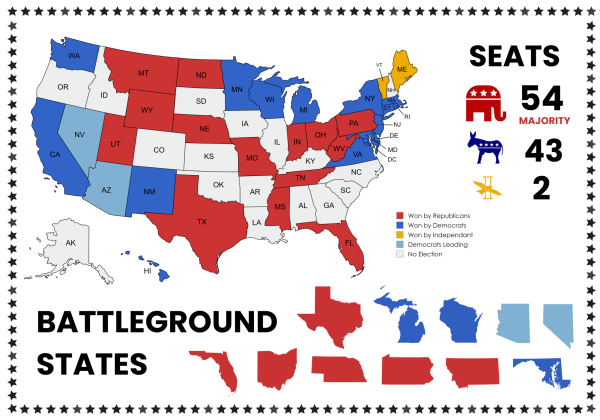
As of now, the overall balance of power in the Senate shows the Democrats losing four seats (including others who caucus with the party), while Republicans have gained four. This would put Republicans in a favorable position to secure a majority, with 53 seats for the GOP and 43 for the Democrats. The outcomes in Arizona and Nevada are still pending, though the Democrats currently hold a lead in both states.
In addition, third-party candidates Bernie Sanders (I-VT) and Angus King (I-ME) have each secured re-election, continuing their roles as independent senators in their third and fourth terms respectively, bringing the total number of third-party seats in the Senate to two.
Looking ahead, Illinois will hold a Senate election alongside the next election for the House of Representatives during midterm elections in 2026, with a new senator to be elected on November 3, 2026. The current Illinois Senators are Dick Durbin (D) and Tammy Duckworth (D).
House of Representatives:
The balance of power in the U.S. House of Representatives is currently leaning toward a Republican majority, with the GOP holding 209 of the 218 seats needed to secure control. Democrats have 187 seats, with nineteen key races remaining undecided. The final majority will depend on the outcome of these contested districts; the Republicans need to win 10 more House seats to secure a majority, while the Democrats need 32. The Democrats have flipped 2 seats, and the Republicans have flipped 6 seats, resulting in a net gain of 4 seats overall after accounting for other seat changes.
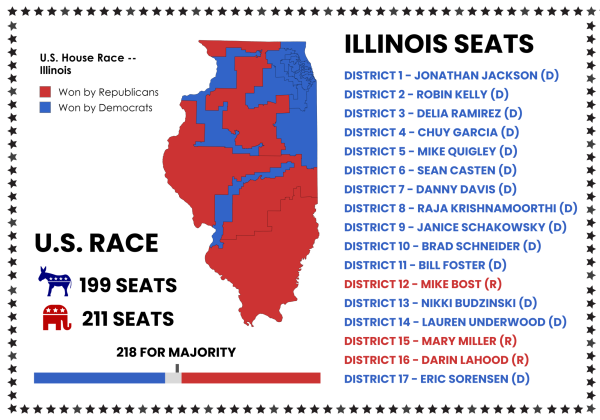
Illinois is set to elect 17 of the 435 House members, with all the incumbents in this election cycle being re-elected. Among these, 14 seats are held by Democrats, including Brad Schneider of District 10 (who you can read about here). The remaining Illinois Republican representatives are Mary Miller (District 15), Darin LaHood (District 16), and Mike Bost (District 12), of whom Miller and LaHood ran unopposed.
The 115th Congress
The last time the Republican Party controlled the executive branch, the House of Representatives, and the Senate simultaneously was during the 115th Congress (2017–2019). This period coincided with Donald Trump’s presidency, following his inauguration on January 20, 2017, and marked the first two years of his administration under a Republican-controlled Congress.
The 115th Congress saw significant shifts in U.S. policy across several key areas, from tax reform and criminal justice to military spending and deregulation. Major laws like the Tax Cuts and Jobs Act, the First Step Act, and defense spending increases were among the significant decisions of this period. At the same time, decisions such as the travel ban and efforts to dismantle the Affordable Care Act took control of political discourse among constituents.


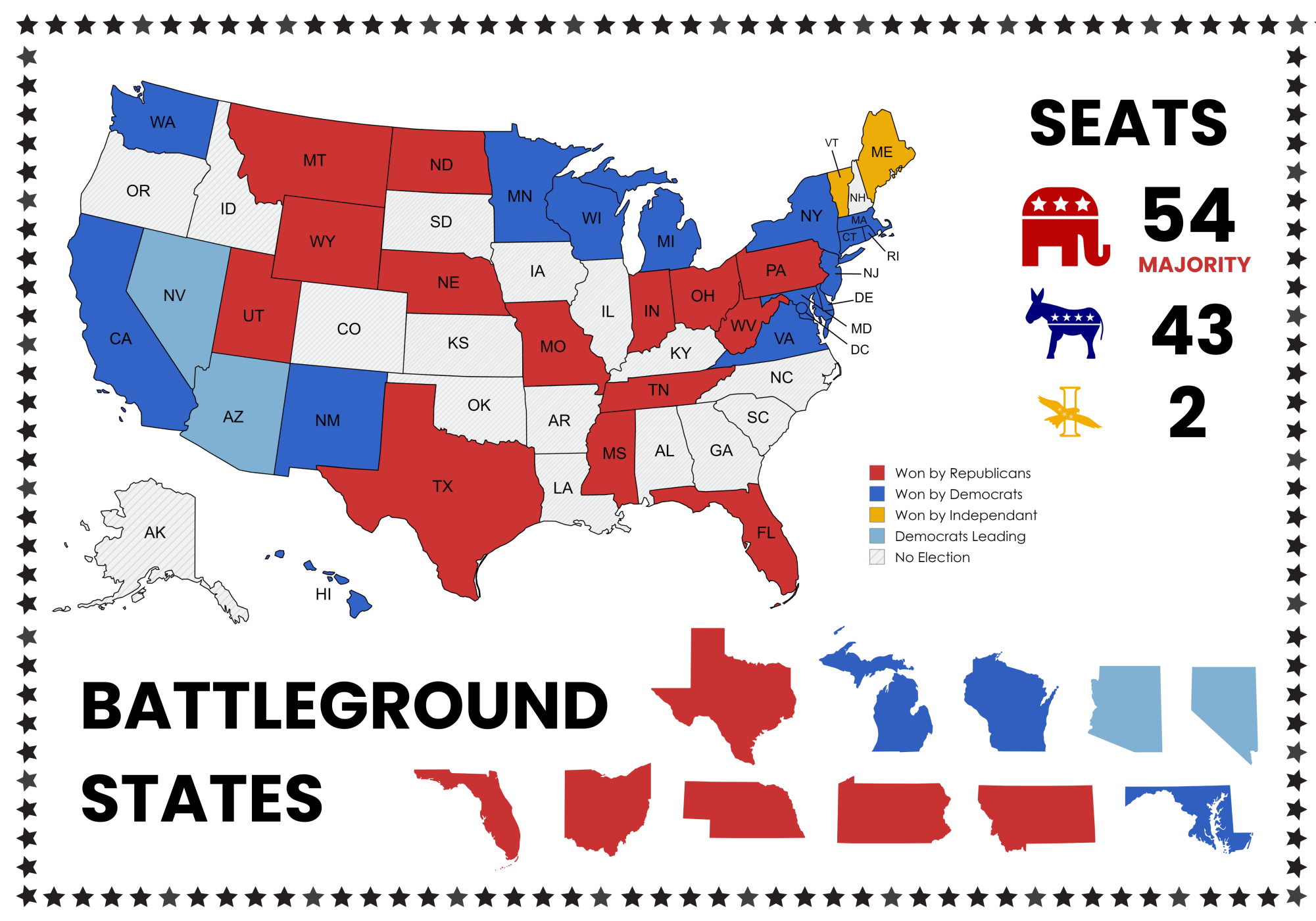



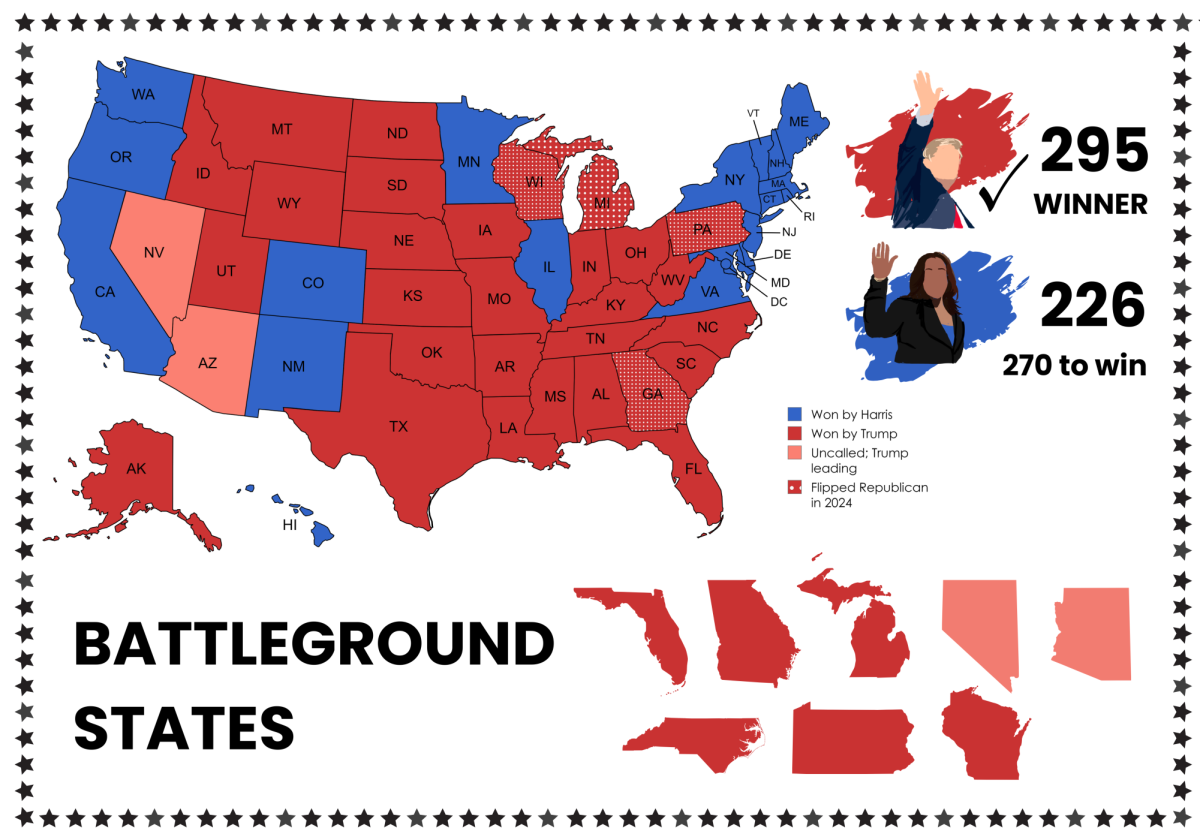

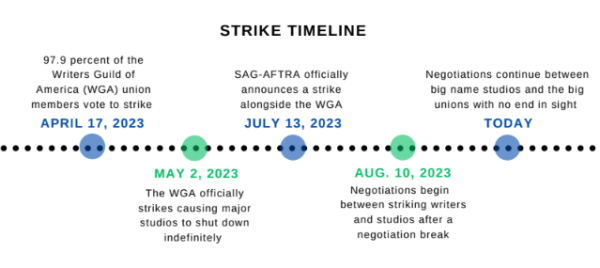
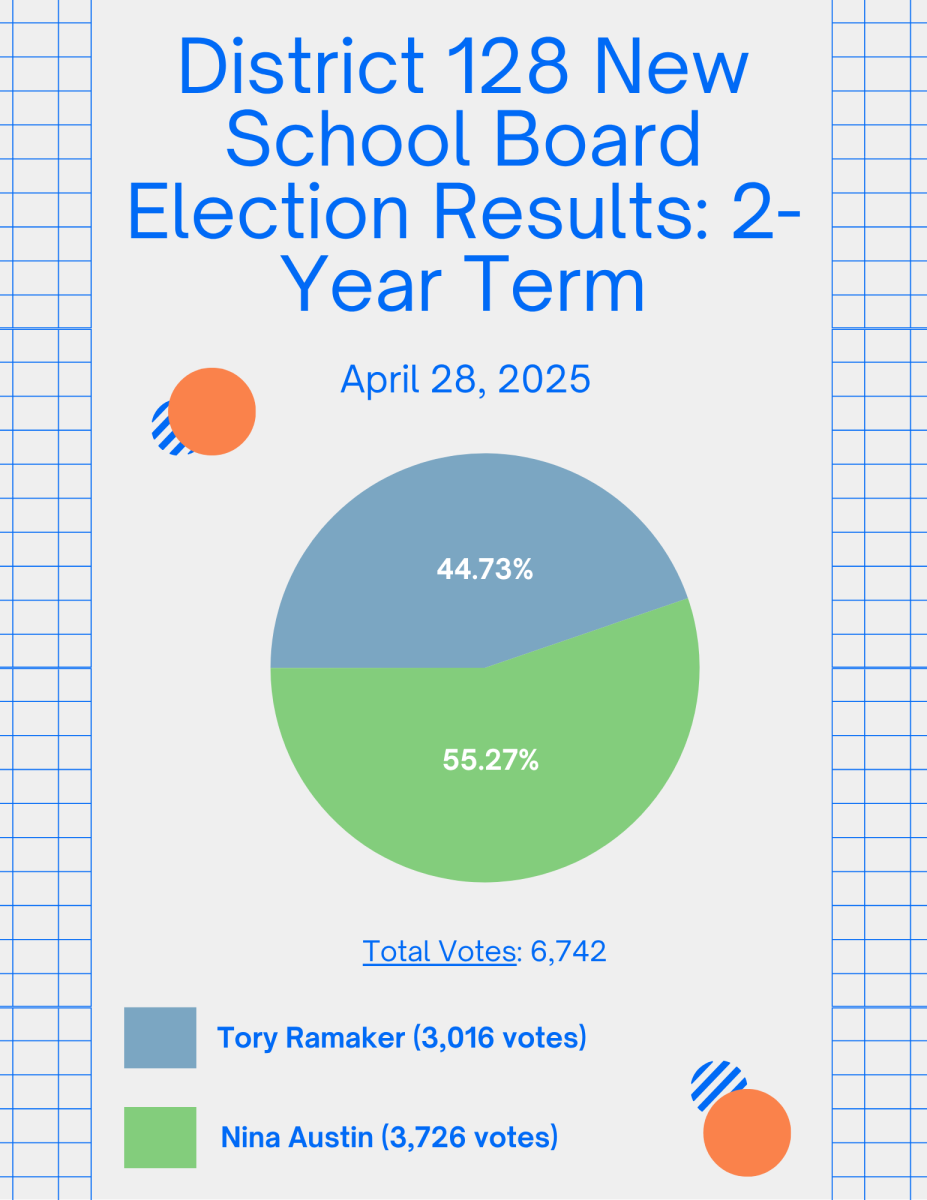
![Mr. Abullh Ali, manager/assistant, helps open Queen Yemeni Coffee in downtown Libertyville at 606 North Milwaukee Ave. With the help of employees such as manager and LHS senior Yousef Taha, they are able to bring the Yemeni and Ethiopian culture to Libertyville by using their Queen spices, cinnamon and cardamom in their drinks such as Adani Chai, which is inspired by Sheda, the Queen of Yemen and Ethiopia. “The history of our coffee [is] a long history and we believe that Yemen and Ethiopia started the coffee and we are bringing something unique to the community,” Mr. Ali said.](https://www.lhsdoi.com/wp-content/uploads/2025/04/Photo-1-1200x800.jpg)

